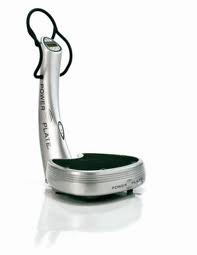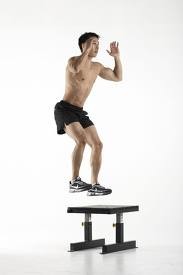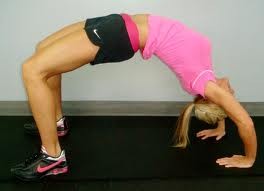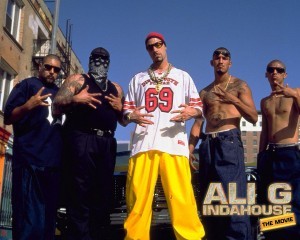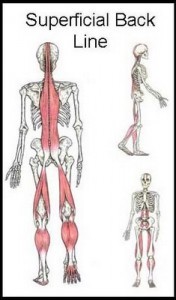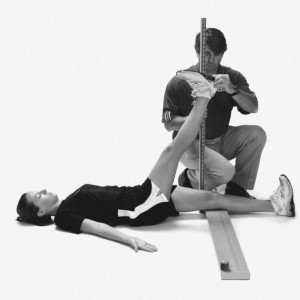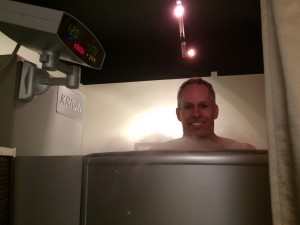So we're into the final phase of our powerlifting program here at Okanagan Peak Performance Inc. In other words we've got 3 more weeks, not counting the one week unload at the end, to make the biggest gains possible before we test our lifts again.On December 15th we're going to have an intra-club powerlifting meet. Anyone can come out on this day if they want to test their deadlift, bench, squat and chin up. You don't have to participate in all of the lifts. And if you just want to come out, see what it's all about and cheer us on you're welcome to do this as well.But that's not the main purpose of this post. What I want to share with you is a great way to warm-up the shoulders before any upperbody training session, specifically for pressing motions.What is this great tip I'm talking about?Well I was probably first exposed to it by Tom House at an NSCA coaches conference. Baseball players, specifically pitchers, will know this name.Later on at a course in California I was able to experience the benefits of this on a commercial type version of this device.Later, I came across a tool that I picked up at another conference and almost had it confiscated going through security at Calgary International Airport. Can you believe security thought it was a crossbow?And more recently I collaborated with Eric Cressey on a program and some coaching for a local pitcher. Anyone who reads t-nation or baseball specific training will know this name. Speaking of powerlifting, Eric has deadlifted over 660 lbs while weighing in the 160s!What I'm talking about is using vibration training or some rhythmic stabilization drills into your program before you lift.Before I get into what kinds of drills you could do it's important to realize...
8 Things to Prevent a Bone Fracture
[caption id="attachment_3199" align="alignleft" width="183"] Proper landing mechanics are an essential part of injury prevention.Are you following the NCAA basketball? Or March Madness as it is more commonly known? I think this is one of the best sports tournaments going because it has such as great format with the 'one-and-done' arrangement. To be honest I don't spend a lot of time watching college basketball during the year. But when March rolls around I try and check out a few games. This year is even more special as I got to go to some games. While I was down to California for a conference I managed to find some tickets on Craigslist for the games in San Jose. What a blast! What made it even more fun was the fact that I was able to keep it a secret from Megan right up until tip off at the arena. But although the experience was once in a lifetime and a fun thing to do on the side at the conference I actually want to talk about a game we didn't see. The one where Kevin Ware, from Louisville, broke his leg. Now if you have a weak stomach don't go check it out on youtube. And sorry Jordy, but blurring your eyes when you watch doesn't prevent nightmares. Anyways after seeing this horrifying accident I thought to myself 'I wonder if he had been doing x-y-z prior to the accident?' And I also thought this might interesting and useful for you as well. So here are 8 Things to Prevent a Bone Fracture. 1. Eccentric Training One of the first things that comes to mind is eccentric training which is the portion of a muscular contraction when the muscle is being lengthened. This is when most injuries happen so it makes sense to...
Good Exercises Done Wrong - Stability Ball Hands to Feet
I remember a number of years ago when I first got started in the training industry. And I attended a fitness conference down in Vancouver. This would be the first time I would get to see and meet Peter Twist, who at the time was the strength & conditioning coach for the Vancouver Canucks. Now Peter was a big advocate of using balance tools in training and incorporated a number of different exercises using stability balls, balance boards and BOSU trainers. And if the novelty of a new training toy wasn't enough to get the average exercise, or athlete for that matter, excited about training I don't know what would. But to make even more enticing we found lots of ways to perform our core training on a balance or stability ball. One of the exercises that came out of this period of training was the stability ball pass from hand to foot. To perform you start in a supine (on your back) position with a stability ball between the feet. The arms are straight and overhead on the ground. The legs are lifted off the ground and the ball is passed to the hands over the trunk. The ball is then reached overhead as the legs are lowered to the ground in a controlled manner. When performed properly this is a great drill. It incorporates hip & shoulder flexion while having to stabilize through the lumbar region. And who doesn't need more hip & shoulder mobility plus core stability, right? This seems like a great drill. Unless of course we compensate when we perform the drill. How do we compensate? Well imagine that your core stability determines how low you can lower your legs towards the ground when they start in a vertical position. A stable core will allow the...
Deadlifts Are Bad
So this week we had a client that was seeing a chiropractor and was informed that there was a particular exercise that no one should be doing. And based on the title of this post you already know what the exercise is. But we train a number of our clients with deadlifts. And we don't have DC after our names. So what does this mean? Well since Breaking Bad is done I know you've got nothing else to do but stick around and find out the truth. Which is that deadlifts are not bad. Nor are deep squats. Or bench presses. Or biceps curls in the squat rack. (I threw that last one in as a trick to see if you're still paying attention. I do my biceps curls on the Olympic platform) In fact there is no such thing as a "good exercise" or a "bad exercise". There is only exercise done with proper form or improper form. Simple as that. Because here's the thing...we all deadlift anyways. A deadlift is basically a hinging movement at the hips. So whereas a squat would involve most of the bending to happen at the knees a deadlift involves most of the bending at the hips. Imagine all of the times you may hinge (deadlift) in a day: * picking up your suitcase off the belt at the airport* taking a bow as conductor of the symphony orchestra* closing your gar door when your arms are full of groceries But I would go further than to simply disagree with the premise that deadlifts are bad for you and should be avoided but they are good for you and should be in most people's programs. Why are deadlifts important? Because they promote the ability to remain in extension. Flexion on the other hand:* usually...
Back Bridge - The Anti-Sitting Exercise?
It seems like everyone is familiar with the problems of too much sitting. From tight hips, weak glutes, forward head position, flexed wrists, slumping into poor posture and a lack of caloric expenditure it's easy to find reasons to hate on sitting. So instead we opt for different ergonomically designed chairs. Or sit on stability balls (which still allow for all the same problems described above). We raise our desks so we have to stand to work at them. We drink more water to force us to stand every so often to use the bathroom. And some people have figured out the benefits of kneeling versus sitting. But even if we change our work or study environment to eliminate sitting there are still times when we will have to sit. Unless you own a Pope-mobile or a Segway I'm sure your daily commute involves some sitting. As do certain meetings, meals in restaurants, nights out to the movies or theatre and trips to the bathroom. If we can't eliminate all sitting from our lives maybe we should be incorporating more anti-sitting drills and exercises into our training? I think a lot of good coaches are already doing this by programming extra posterior chain work for the glutes and low back while putting the client in a kneeling or standing position. Is there anything else we could do to undo the effects of sitting? Sure and it's something most of learned how to do at a young age and it's the back bridge. ***short disclaimer...the back bridge requires high levels of mobility at the wrists, shoulders and hips and is not recommended for those with any type of pre-existing back condition...if you pass the clearance tests just described than feel free to try the easiest versions first and build up muscular endurance...
Top 10 Benefits of Unilateral Training - Part II
To read Part I of this post click here. #6 - IDs weak linksWhat are your top three weak links? Quick don't take time to think. If you had to take some time to think about them then you probably aren't addressing them as much as you should in your program. Worse maybe you couldn't answer this question on the spot and don't know the answer. Worse still what if your opponent knew what your weak links were and exploited them during competition? Or if you became injured by not addressing them? The good news is that you can fix your weak links, even if you're not sure what they are. Any time you perform a unilateral movement pay attention to L-R differences. Are you stronger on one side? Is your balance worse on one side? Do you move better on one side than the other? Figuring out the answers to these will translate more effectively to enhanced performance than the best 'sports-specific' exercise ever will. Make notes in your training journal answering the above questions when you train. Where you are weaker do that side first. Where you don't move as well add in more stretches and mobility drills. And where you have discomfort seek out the best manual therapist you can find. #7 - Additional EST workEST is energy system training and refers to training the various system of the body that provide fuel for our various activities. Cardio tends to be associated solely with aerobic training and therefore we don't use that term unless the duration and intensity justify it. So how does unilateral training lend to EST? Well in a couple of ways. First, by using one limb you trigger muscles that typically don't get a lot of attention when two are used. Secondly the sets tend...
Good Exercise Done Wrong - Stir the Pot
There are a few staples most people look to include in their workouts regardless of the goal. It doesn't matter if the goal is weight loss, sports performance or rehab everyone recognizes the value of doing some type of core work.In the last few years one core exercise in particular has become more and you're seeing more and more people doing the 'stir the pot' exercise.Why the sudden increase in popularity of this core drill? Well much of the credit has to do with the stamp of approval this exercise got from Dr Stu McGill, the world-reknowed spinal biomechanist from Canada. When Dr McGill speaks on things related to core training people listen. And the sir the pot was one that he was recommending as a way to stabilize the spine and train the core.But besides the endorsement of a top researcher this exercise is also a great choice for a few other reasons:1. It allows for the development of muscular endurance through the core. When performed correctly an individual can gradually build with this drill by adding time or reps to their sets. 2. It helps develop anti-extension strength. While much of the fitness community talks to the need of getting out of the sitting position and performing anti-flexion drills there is also benefit to performing anti-extension drills. This is especially true for people who live in anterior tilt and have low back pain.3. It allows for the progression of the basic plank. Most of us start with planks to develop the core. And this is great. But it seems things go from the basic plank to trying to do fast movements with load. It kind of seems like sometimes we miss a step and the stir the pot fills this gap. It allows us to go from a stable...
Rolling patterns for health and performance
So how do you roll? I don't mean this in terms of your style but more as to how you move. [caption id="attachment_3979" align="alignleft" width="300"] This is not how we roll For most of the adult population the day consists of sitting on the commute to work, sitting at a desk, sitting on the drive home, sitting to eat dinner followed by sitting down to watch the latest episode of Suits. [caption id="attachment_3980" align="alignleft" width="238"] You might want to sit down for this one While the obvious pattern above is too much sitting we make this worse by not only not moving enough but moving in only the sagittal plane (think forward and back). We are ignoring movements in the frontal and transverse plane. Recently we have seen in increase in multi-planar movements and function from people like Dewey Nielsen, the folks at Primal Move and any else that trains with varied movement and challenge. So why the interest in rolling and 3D movement? Well part of this traces back to how we learned to move as infants. We learned head control, then as we explored with our heads to get to whatever it was that caught our attention we would bring our opposite arm or leg over to flip over. And while we learned this rolling pattern as infants it has been lost as we become more sedentary, become injured and age. However as we address our ability to roll we can see improvements in our ability to perform in rotational sports such as hockey, tennis, golf as well day to day movements such as squats and hip hinges. Check out the video below to see Charlie Weingroff, who spoke at the 1st Okanagan Strength & Conditioning Conference, talking about rolling. http://youtu.be/gmQuG2mnkWwHere are a few takeaways from the video and...
Rotational Core Training
It seems like a core training is a staple of every training program regardless of the goal. [caption id="attachment_2968" align="alignleft" width="266"] What many consider a core exercise. Want to address a low back issue? Do more core training. Want to improve your sports performance? do some core drills specific to your sport. Want to tighten up your mid-section? Do some abs-specific core drills. Now I'm not saying this is the best or only way to achieve your goal in these area but that this is what many will default to in order to achieve success. And there are a couple of ways we typically train the core in terms of the plane we are moving in. 99% of our training is in the sagittal (forward and back) plane and so we do: * crunches * reverse crunches * leg raises * roll outs ...you get the point. Many core exercises, and well exercises in general, are designed with a forward and back emphasis. But sometimes we'll add in a side to side core drill targeting the frontal plane. This could include: * side bridging * side crunches/bending/flexing * lateral pulls or lifts Now do you notice anything in common about training in the sagittal or frontal planes? The features in common is that gravity helps to reduce the force. For example, if you were on the ground on your back and tried to sit up gravity works against you and slows down this movement. As well, if you were on your side in a bridge position gravity works against you and makes it difficult to hold a tall position for an extended period of time. However when we move in the rotational plane (think twisting) gravity down not slow down the movement. If I hold a basketball at chest height and...
The Superficial Back Line
What are your problem areas? You know what I mean? What are the areas that you constantly have to stretch or where you are more likely to feel tension in the body? Some people would answer their hamstrings. Others would say their low back. And others might say that it's their upper traps. At this point when we have listened to our bodies closely enough to figure out something is wrong we have two choices: 1. We can continue on as if nothing is wrong. We do this by working around our aches and pains. We found new exercises to target similar muscles and actions. We may try a new split putting less emphasis on this problem area. Or we may power through our training sessions thinking this is part of the process and it proves our toughness and commitment to our goal. 2. We can address these issues and seek help. We will book an appointment with our therapist of choice and get some relief. We may find out what the issue is and learn which movements to reduce in our workouts and which ones we have been neglecting. We realize that the solution is neither an independent effort on our part nor the responsibility of another health practitioners but a joint effort to address the issue. Hopefully we are all people that prefer option #2. Now imagine a group of people that had issues with: * the bottoms of their feet * tight hamstrings * headaches Typically a common response would be to address each by zeroing in on the area affected. The person with sore feet may try getting off their feet, invest in orthotics, stretch their calves or something else specific to the feet. The person with the tight hamstrings may stretch the hamstrings or go for...
End of the RICE age?
I'm a big fan of systems. And often times systems go hand-in-hand with acronyms. Consider for example that SYSTEM is an acronym for save yourself time energy and money.This can help us remember what to do and ensure that something is done the same way each time.If you played sports growing up there is a good chance you sprained an ankle or had some other type of soft tissue injury at some point. And do you remember what the protocol was for this type of injury?RICE which stands for rest, ice, compression and elevation was the solution to treating our injury and ensuring recovery. More recently there is some debate as to whether this is still the preferred protocol.You don't have to go back many years to when the recommendation for an episode of low back pain was bed rest and ice. Now medical professional will encourage a return to regular activity as soon as it is safe to do so. Which is the opposite of bed rest. Instead the prescription is movement rather than rest.But what about ice?And where does heat factor into this?Let's look at each individually to see what each does for us and come up with a recommended plan for you.ICEWhat it doesThe application of ice is typically used to control inflammation and does so by constricting blood vessels in the vicinity of the cold. There will also be an analgesic (pain relief) effect from the topical application of ice.When it may helpTreatment with cold or ice (cryotherapy) may be beneficial after a heavy lifting session, between training sessions or with an acute muscle injury.How long to useFor an acute joint sprain ice may help in the first 24-48 hours to help reduce inflammation and provide some pain relief. It is important to recognize however that the...
Back Spasms to Squats in 20 Min
The other day a client walked past the front desk and said 'I'm done. My back is spasming and I can't train today'. I could see the pain and disappointment in this young athlete's eyes. She was a dedicated athlete and was upset with only the physical pain but also with the thought of not being able to move without pain. I asked her if she has a few minutes to check what was wrong. I should clarify that this wasn't an attempt to diagnose an injury. Instead I wanted to take a look at her movement patterns to see how she was moving and how this might be affecting her low back. The first thing we looked at was her overhead squat pattern. This was a bodyweight assessment and she was ok to get into the set up position. However as she began to squat she winced and said her back spasmed. I asked her if it hurt standing, when she began to descent or at a certain depth. She said it was at a certain depth. The next thing I had her do was get on the ground on her back to see if she could hug her knees to her chest. She could and it didn't aggravate her back. This was interesting to note because she couldn't achieve the same knee and hip flexion from a standing position. After the knee hug test I asked her to keep both knees straight and lift one leg as high as she could. She raised one leg a few inches off the ground and repeated the same for the other leg. This was unusual as typically we look to see 80 degrees of hip flexion on this test. Right now this athlete was demonstrating 10 degrees. Maybe. When I asked the...
Whole Body Cryotherapy -165 C for 3.5 Minutes
Last week I had the opportunity to go and try whole body cryotherapy (WBC). If you're not familiar with what this it's kind of like being in a stand up tanning booth but instead of being strayed with tanning dye you are blasted with nitrogen gas. [caption id="attachment_4794" align="aligncenter" width="300"] 2 mins left at -165 C. Brrrrr!!! In the picture above you can see me standing in the capsule. When you first enter the capsule your head is below the level of the top of the unit. You are then raised up until your head pokes over the top.What you can't see is me in my undies, thermal booties and gloves. The whole process takes 3.5 minutes total. But trust me, you'll want someone else standing there talking to you to distract you from the time remaining. If you're too much of a wimp you can always push open the back door and stop the experience whenever. So what are the purported benefits of WBC? Some of the more popular claims are increased recovery after exercises and how it facilitates rehab post-injury. Since most days involve a training session and I'm currently mending an ACL surgery, it made perfect sense to go and give this a try. While there may be enhanced subjective recovery and decreased muscle soreness the research has yet to come out showing additional benefits (1). At minimum there doesn't appear to any adverse effects to WBC. After the experience I did notice my glutes were cold. And I did feel more alert. I guess this is similar to jumping in the lake this time of year. You will definitely feel refreshed after. If you are interested in knowing more or giving WBC a try, go and talk to the guys at Cryo Care. They're almost next door...
